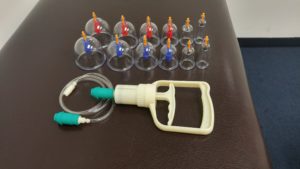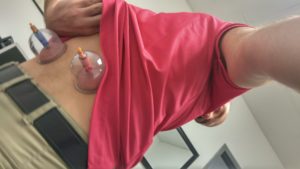By now you have been saturated with news stories and photos of Olympians with circular bruises all over their body from “cupping”.
Cupping has been practiced for thousands of years and is based in Eastern medicine. Initially cupping was used to normalize “Qi” along a person’s “Meridians”.

Another form is “wet cupping”, where the surface of the skin is lanced and the cup placed over the open wound (OUCH!). The suction would draw blood out of the wound to “purge” it. Obviously this is dangerous and not widely practiced. Good luck finding someone still practicing this in the US.
What we see on the Olympic athletes is called “dry cupping”.
What is it supposed to do?
-The vacuum created on the skin causes capillary expansion and often ruptures small vessels, hence the bruising. Athletes use it as a means to alleviate muscle tension, recover from a workout, and encourage blood and lymph flow to an area. Most of these claims are subjective based on a personal experience.
Does it really work?
-As with several forms of manual therapy, the effectiveness is not easily determined in a standard research setting. It is difficult to create a truly double blind or placebo-controlled study (how will both parties be blinded to such a treatment?). Therefore, there is not enough evidence to state that cupping has a profound effect beyond placebo.
That’s not to say that there isn’t a benefit! Conventional science hasn’t figured out how to study it to meet the gold standard (yet).
Of the limited available research (small sample sizes, potential biases), cupping was helpful at relieving pain and generally considered safe (dry cupping that is). Other uses for cupping range from treating acne all the way to rheumatic disease, although there is little or no research to backup these claims.
Want to try it?
I do offer cupping at The Human Body Shop. It can be used alone or as I prefer to combine it with other manual therapies to get the best results. Bruising is common and generally lasts 2-5 days after treatment, but not as tender to touch as an “injury bruise”. Cupping must be performed directly on skin and stay on for 5-15 min depending on condition/areas treated.
As with most of my manual therapy techniques, it is another tool in my toolbox to fix the human body.
